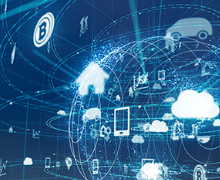- Sustainability
- ESG Information
- Information Disclosure Based on TCFD Recommendations
Information Disclosure Based
on TCFD Recommendations
Policy for Responding to Climate Change
The SKY Perfect JSAT Group views climate-change issues as one of the urgent issues
facing society. In order to solve the issue of climate change, we will work to
reduce greenhouse gas (GHG) emissions associated with its business activities.
In all our business activities, we are committed to reducing the burden on the
global environment and strive to conserve resources and energy.
In our business,
we are actively contributing to climate-change by providing solutions for the SKY
Perfect JSAT Group through satellites and other means.
We recognize the
importance of deepening dialogue with stakeholders and are disclosing the systems,
initiatives, etc., of the SKY Perfect JSAT Group based on the TCFD
Recommendations.
The SKY Perfect JSAT Group declared our support for TCFD in
January 2023.


What is the TCFD (Task Force on Climate-related Financial Disclosures)?
Against the backdrop of increasing climate change risks due to
global warming, there is a growing movement to evaluate the financial impact of
climate change on corporate business.
The Task Force on
Climate-related Financial Disclosures (TCFD) is an international initiative
established by the Financial Stability Board (FSB) in 2015 to encourage
companies to disclose information on the financial impact of risks and
opportunities that climate change poses to their businesses.
Governance
At the SKY Perfect JSAT Group, mainly the Sustainability Division, which
serves as the secretariat of the Sustainability Department, and other related
divisions work together to identify and examine climate-related risks and
opportunities in details. Those findings are reported to the Sustainability
Committee, which is chaired by Person in Charge of Corporate Administration,
for discussion. The Sustainability Committee consults with the Board of Directors on
important matters. After deliberation by directors, matters are approved.
Identified problems and discussions held by the Committee are regularly reported to
the Board of Directors by Person in Charge of Corporate Administration (the
chair of the Committee) to ensure appropriate supervision by the Board of
Directors.
Identified risks are also reported to and discussed by Management
Committee, which is chaired by the Chief Risk Management Officer (the Director in
Charge of Corporate Administration) appointed from among the directors by the Board
of Directors. The Risk Management Committee manages risks for the entire Group,
including climate-related risks.
We consider the risks and opportunities of
climate change to be important topics (related to materiality). Accordingly, the
Environmental Conservation Committee, which promotes company-wide environmental
efforts throughout the Group, works together with the Sustainability Committee to
promote those topics.
Strategy
Scenario Analysis
The scenarios analyzed involve a temperature increase of 1.5°C, less than 2°C, or 4°C as projected in the Shared Socioeconomic Pathways (SSP), which are socioeconomic scenarios of the Intergovernmental Panel on Climate Change (IPCC), and the World Energy Outlook (WEO) 2022 of the International Energy Agency (IEA). See the following items for information on scenarios.
- IEA Stated Policies Scenario (STEPS)
- IEA Net Zero Emissions by 2050 Scenario (NZE)
- IPCC: AR6 SSP1-1.9, AR5 RCP2.6, SSP2 RCP4.5, SSP3 RCP8.5
Timeline
The SKY Perfect JSAT Group has established a timeline for the formulation of our Group climate change strategy. The analysis is divided into three time frames: long term for 2030 and beyond, short term for less than one year, and medium term for the interim.
Businesses and Regions Covered
The analysis covers all of our businesses (space and media) and the entire globe. In addition, all of our sites may be affected by the manifestation of physical risks if extreme weather events increase due to climate change. Thus, we calculated the flood risk for all 13 of our sites, including domestic sites and overseas offices. Results revealed a riverine flood risk in the vicinity of the Yamaguchi Network Control Center for the year 2030. In contrast, the Yamaguchi Network Control Center is located on high ground and is equipped with an emergency power supply in the event of an outage, so it is unlikely to be seriously impacted. In response, we will enhance our business continuity plan (BCP).
Assessment of the Significance of Climate-related Risks
Based on the scenario analysis proposed by the TCFD, we identified climate-related risks and then quantitatively and qualitatively assessed the business impacts of the most significant risks and opportunities in each scenario. In light of the timing of the manifestation of each risk/opportunity and the magnitude of its impact on our financial plans and business strategy, we ascertained the status of our response to priority items, we examined our response, and we discussed and reviewed specific actions with management.
Transition Plan
The SKY Perfect JSAT Group has begun to formulate a transition plan
for decarbonization to achieve carbon neutrality in 2050, as common global goal.
In order to achieve Scope 1 and 2 carbon neutrality by FY2025, we will steadily
work to reduce greenhouse gas (GHG) emissions by switching the Group’s
electricity used by our Group's own offices and satellite control centers to
substantial renewable energy and by expanding our efforts to reduce energy use.
For Scope 3, we will work together with suppliers to reduce GHG emissions
primarily by spreading green procurement among suppliers in order to achieve
carbon neutrality for Scope 1-3 as a whole by the year 2050. We recognize the
need to diversify our Scope 3 efforts in the future.
One of the strengths of
the SKY Perfect JSAT Group is satellite-related services. By actively developing
those services, we intend to both help decarbonize society as a whole and to
grow our business.
Energy-saving initiatives:
・Conversion of indoor lighting to LED
・Increasing water volume
in the heat storage tank installed in the Tokyo Media Center to accelerate heat
storage and reduce losses during low-temperature water supply
・Reduction of
the number of air conditioning units operating outside regular hours
Climate-related Risks/Opportunities in Scenarios Involving a Temperature Rise of 1.5°C, less than 2°C, or 4°C
The SKY Perfect JSAT Group reviewed our scenario analysis from March
to May 2023 to increase the sophistication of our risk/opportunity items,
worldview, timeline definition, transition plan, and disclosure. In terms of
risks, there is limited impact on business and finances. We regard each
identified opportunity as a chance and are considering incorporating a climate
change perspective into our business strategy (including external
communication).
The following tables list climate-related risks and
opportunities in scenarios involving a temperature rise of 1.5°C, less than 2°C,
or 4°C.
| Risk | Classification | Events | Details | Timeline | Priority | Efforts |
|---|---|---|---|---|---|---|
| Transition risk | Laws, regulations, and policies | Introduction of a carbon pricing mechanism | Common: Increased payment in conjunction with higher taxes resulting from the introduction of a carbon tax | Medium term | Low |
|
| Common: Increased indirect expenses due to the purchase of carbon credits for potential emissions | ||||||
| Common: The carbon tax and other CO2 emission-related costs levied on satellite/video equipment manufacturers and data centers will be passed on to the company, increasing its operating costs | ||||||
| Enhanced reporting requirements for GHG emissions | Common: Increased pressure for truthful reporting on climate change and increased costs associated with the requirement for companies to obtain third-party subscribers certification | Medium term | Low |
|
||
| Implementation of regulations on existing products and services | Common: Decreased revenue due to the
inability to conduct effective sales promotions as a result of
rules set by the government and various industry associations
restricting advertising, exhibitions, and other sales activities
for companies that are not conscious of climate change Common: Increased capital investment to reduce electricity consumption due to stricter environmental regulations |
Medium to long term | Low |
|
||
| Litigation arising from responses to climate change | Common: Increased costs due to lawsuits filed by nearby residents and customers as a result of antenna accidents when satellite receiving antennas are damaged or malfunction due to disasters caused by storms | Medium to long term | Low |
|
||
| Common: Increase in expenses to respond to litigation presumably in the event of delays in addressing climate change | ||||||
| Technology | Increased investment in decarbonization of products and services | Space: Increased procurement costs due to the use of decarbonized materials in equipment, facilities, satellites, and rockets, which will tack on additional costs for new R&D | Medium to long term | Medium |
|
|
| Media: The use of decarbonized materials in broadcast-related equipment and facilities will increase procurement costs due to the additional costs of new R&D (*low priority for this item only) | ||||||
| Space: Increased rocket procurement costs due to the change in satellite launch fuel to non-fossil fuels such as hydrogen | ||||||
| Market & reputation |
Accelerating the switch to renewable energy | Common: Increased electricity prices due to the switch to renewable energy sources | Short term | Low |
|
|
| Consumer/customer behavior (e.g., changes in procurement conditions) regarding the response to climate change & increased stakeholder concerns | Common: Risk of reputation damage or customers moving to other businesses using renewable energy sources if electricity is not generated using renewable energy sources | Short to medium term | Medium |
|
||
| Media: Fewer new contracts and more cancellations as consumers shift to companies that respond to requests for information or content related to the environment when companies have a low awareness of climate change initiatives | ||||||
| Common: Decreased revenues due to the inability to comply with environmentally friendly conditions included in bidding requirements and company procurement policies | ||||||
| Common: A loss of reputation and revenue for services and companies due to a lack of awareness of climate change initiatives, including BCP compliance, and failure to achieve set targets | ||||||
| Physical risk | Acute | The occurrence of extreme weather events such as storms | Common: Increased repair costs and lower customer satisfaction due to delays in repairs when antennas (our own and customers’) malfunction due to disasters caused by extreme weather events such as storms | Medium to long term | Low |
|
| Media: Extreme weather events, such as storms, have a negative impact on reputation and brand recognition due to the inability to provide service, and loss of revenue due to customer attrition | ||||||
| Common: Increased flooding of facilities and power outages due to extreme weather events such as storms, as well as costs associated with recovery (e.g., labor costs for overtime work) and increased costs for preemptive measures | ||||||
| Common: Increased insurance premiums for damage to facilities (offices, satellite control centers, base stations, etc.) due to extreme weather events such as storms | ||||||
| Common: Business interruption and increased costs due to the effects of disasters on employees | ||||||
| Common: Increased operating costs due to lower production efficiency of employees as a result of a deterioration in working conditions | ||||||
| Common: Decreased customer acquisition due to delays in delivery and halted manufacturing of equipment such as STBs and receiving antennas and their components due to extreme weather events such as storms | ||||||
| Chronic | Changes in rainfall patterns and increases in average temperatures | Common: Decreased revenues due to customer attrition and a greater frequency with which viewing fees are waived when customers in an area are unable to receive satellite communications/broadcasts due to an increase in heavy rainfall caused by changes in rainfall patterns | Medium to long term | Low |
|
|
| Common: Increased power costs due to increased power consumption by air conditioners to cool network equipment and facilities as a result of higher average temperatures around the world | ||||||
| Common: Increased costs due to damage to assets and equipment as a result of weather-related disasters | ||||||
| Common: Increased costs due to service outages caused by flooding, reduced power use, and power outages |
Scroll sideways to view.
| Risk | Classification | Events | Details | Timeline | Priority |
|---|---|---|---|---|---|
| Opportunities | Resource efficiency | Recycling to enable low carbon emissions | Space: Reducing procurement costs through the use of recycled rockets | Short to medium term | Medium |
| Market | Promoting a response to climate change through government assistance | Common: Increased revenue due to expanded government assistance for environmental efforts | Short term | Medium | |
| Improved market valuation as a result of an active response to climate change | Common: Actively addressing climate change will improve the company’s reputation, and support from investors will increase opportunities for funding | Short term | Medium | ||
| Space: Informing the public that the company is actively participating in renewable energy programs by investing in a venture company (Challenergy Inc.) that develops and sells wind turbines | |||||
| Energy resources | Actively using low-GHG-emitting energy sources | Common: Decreased electricity costs as a result of reduced costs of procuring renewable energy | Short term | Low | |
| Products and services | Developing and expanding decarbonized products and services | Space: Expanding optimal navigational assistance for ships via Spatio-i, which is an information platform that combines big space data and AI technology | Medium term | Low | |
| Media: Expanded revenue from Zero-CO2-emitting Smart Home Electricity Use with SKY PerfecTV! | |||||
| Space: Expanding the Solar Meilleur service to estimate the electricity generated by solar power | |||||
| Expanding new services using images and data obtained from satellites | Space: Using the features of disaster-resistant satellite communications to expand services suited to disaster preparedness and a BCP to local governments nationwide and companies that provide important public services such as power and gas | Medium term | Medium | ||
| Space: Expanding landslide risk assessment services using LIANA, which is a service that monitors slopes using satellite data | |||||
| Space: Expanding services to facilitate observation of changes such as deforestation via Spatio-i, which is an information platform that combines big space data and AI technology | |||||
| Increased opportunities to serve environmentally conscious customers | Space: More contracts from environmentally conscious government agencies and private corporations by providing services with a low environmental impact through satellites, HAPS, or other facilities with low CO2 emissions | Medium to long term | Medium | ||
| Media: Being able to provide the content and services that customers expect and increasing revenue by addressing greater environmental awareness through fan-based marketing | |||||
| Media: Providing services with a low environmental impact, which will result in more contracts for our Media Solutions Business from environmentally conscious companies | |||||
| Space: Expanding revenues in conjunction with expanding services as a result of the operation of space data centers that do not emit CO2 |
Scroll sideways to view.
Risk Management
In order to identify and evaluate climate-related risks and
opportunities for the SKY Perfect JSAT Group, the Sustainability Division (the
secretariat of the Sustainability Department) and other related divisions
collaborate to identify and evaluate climate-related risks and opportunities through
scenario analysis. Those divisions also review countermeasures for each item
involved in risks and opportunities. Assessment of the significance of risks and
opportunities being examined is reported to the Sustainability Committee for
discussion. The Sustainability Committee consults with the Board of Directors on
important matters. After deliberation by directors, matters are approved.
Identified risks are also reported to and discussed by Management Committee, which
is chaired by the Chief Risk Management Officer (the Director in Charge of Corporate
Administration) appointed from among the directors by the Board of Directors. The
Risk Management Committee manages risks for the entire Group, including
climate-related risks.
Risk Assessment Criteria and the Process of Managing Climate Change-related Risks
We conduct assessments of potential risks in operations of the SKY
Perfect JSAT Group, including climate change. To establish risk assessment
criteria, we also refer to relevant laws and ordinances, international
standards, and past accidents in similar businesses to determine the
significance and impact of potential risks for each assessment criterion
depending on the type of business and industry and the country or region in
which the business operates.
In light of the differences in the timeline for
and the nature of risks to our business, the Sustainability Committee responds
to, mitigates, manages, and assesses climate change-related risks. The Risk
Management Committee verifies the process by which the Sustainability Committee
responds to climate change-related risks and it ensures the comprehensiveness of
company-wide risk management.
Indicators and Targets
Climate change indicators and targets are listed below.
(a) Climate change indicators and targets
| Indicator | Target |
|---|---|
| GHG emissions (Scope 1, 2) | Carbon Neutral 2025 SJH and Consolidated Subsidiaries |
Scroll sideways to view.
(b) Changes in GHG emissions (Unit: t-CO2)
SKY Perfect JSAT Corporation
| Category [Unit] | Scope*1 | FY2017 | FY2018 | FY2019 | FY2020 | FY2021 | FY2022 | FY2023 | ||
|---|---|---|---|---|---|---|---|---|---|---|
| Scope 1 [t-CO2] |
Direct GHG emissions | SJH and its domestic consolidated subsidiaries | - | - | - | - | - | 51 | 47 | |
| SJC | 8 | 10 | 10 | 8 | 10 | 13 | 13 | |||
| Scope 2 [t-CO2] |
Indirect GHG emissions of energy origin | SJH and its consolidated subsidiaries | - | - | - | - | - | 5,720 | 526 | |
| SJC | 12,200 | 12,974 | 12,672 | 11,415 | 10,218 | 5,535 | 348 | |||
| Scope 3 [t-CO2] |
(Total amount disclosed in FY2022) | SJH and its domestic consolidated subsidiaries | - | - | - | - | - | 105,967 | 123,851 | |
| SJC | - | - | - | - | - | 104,099 | 121,930 | |||
| Category 1 | Purchased Goods and Services | SJC | - | - | - | - | - | 56,316 | 60,190 | |
| Category 2 | Capital Goods | SJC | - | - | - | - | - | 10,541 | 26,714 | |
| Category 3 | Fuel- and Energy-Related Activities Not Included in Scope 1 or Scope 2 | SJH and its domestic consolidated subsidiaries*2 | - | - | - | - | - | 1,801 | 1,862 | |
| Category 4 | Upstream transportation and distribution | SJC | - | - | - | - | - | 93 | 89 | |
| Category 5 | Waste generated in operations | SJH and its domestic consolidated subsidiaries*2 | - | - | - | - | - | 66 | 58 | |
| Category 6 | Business travel | SJC | - | - | - | - | - | 1,293 | 2,446 | |
| Category 7 | Employee commuting | SJC | - | - | - | - | - | 2,449 | 2,558 | |
| Category 11 | Use of sold products | SJC | - | - | - | - | - | 31,572 | 25,350 | |
| Category 12 | End-of-life treatment of sold products | SJC | - | - | - | - | - | 3 | 3 | |
| Category 13 | Downstream leased assets | SJC | - | - | - | - | - | 1,833 | 4,581 | |
| Total of Scope 1 + 2 emissions | SJH and its consolidated subsidiaries | - | - | - | - | - | 5,771 | 573 | ||
| SJC | 12,208 | 12,984 | 12,682 | 11,423 | 10,228 | 5,548 | 361 | |||
| Total of Scope 1 + 2 + 3 emissions | SJH and its consolidated subsidiaries | - | - | - | - | - | 111,738 | 124,424 | ||
| SJC | 12,208 | 12,984 | 12,682 | 11,423 | 10,228 | 109,647 | 122,292 | |||
Scroll sideways to view.
*1 Until 2022, excluding overseas bases and overseas consolidated subsidiaries of SJH Group's domestic consolidated subsidiaries. Excluding SJC Hong Kong S.A.R. Branch in 2023.
*2 Excludes SPCC.
(c) Percentage of substantial renewable energy use (trends)
| Indicator | FY2019 | FY2020 | FY2021 | FY2022 | FY2023 |
|---|---|---|---|---|---|
| Percentage of substantial renewable energy use | - | - | Approx. 30% | 93% | 97% |
| SKY Perfect JSAT Holdings Inc. and its domestic consolidated subsidiaries | |||||
Scroll sideways to view.






